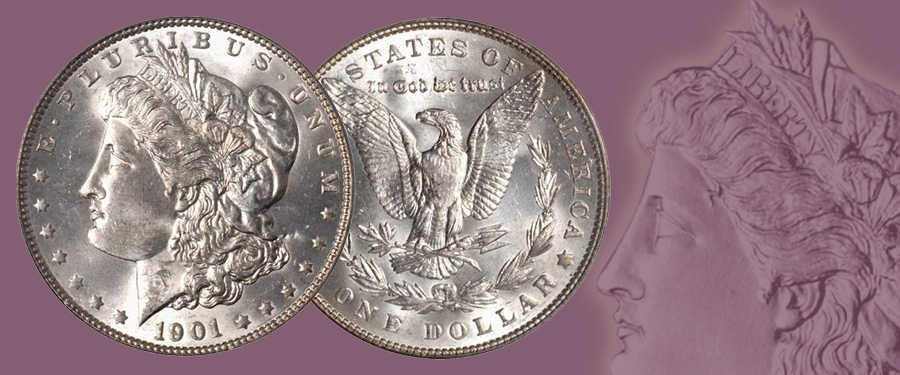
Question: With a reported mintage of 6,962,000 circulation strikes, the 1901 Philadelphia Mint Morgan silver dollar would not appear to be worthy of designation as a “key” issue or even close. However, the 1901 dollars are priced very high, even in Mint State. Can you explain?
Answer: The 1901 Morgan dollar is quite common in well-worn grades, and is hardly a “key.” The “problem” — if it can be called that — is that in Mint State it is a rarity. Apparently, most if not all of the 6,962,000 pieces were put into circulation at or near the time they were minted. Few were saved in Treasury vaults. Any that were saved in quantity in Treasury vaults were possibly melted in 1918 under the terms of the Pittman Act.
In 1901 at the time of minting, Uncirculated (today called Mint State) dollars were not collected. Rather, the few specialists in the dollar series who wanted the 1901 date opted to buy a Proof, of which 813 were struck. To my knowledge, no one at the time considered that Proof and circulation strikes were different formats. Rather, Proofs were automatically acquired as cabinet coins, and circulation strikes were ignored.
Thus, the survival of Mint State 1901 dollars was strictly a matter of rare chance. Of the Mint State coins that do survive, nearly all are in lower grade ranges, such as MS-60 through MS-62, and even these are quite scarce. MS-63, MS-64, and MS-65 coins are sufficiently rare that their appearance at an auction or in a price list would attract quite a bit of attention.





